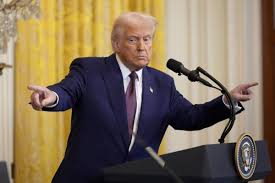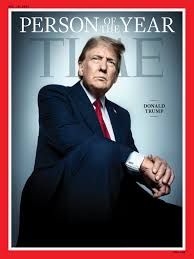
Democrats are understandably traumatized from the results of the 2024 presidential election — as well as the ongoing consequences of Donald Trump’s return to power.
But like it or not, time marches on and we’re already at the point where a wide array of would-be Democratic candidates are imagining themselves winning back the White House, and some are already making moves toward that end. So we might as well bite the bullet and look ahead at how the 2028 Democratic primary may play out.
But before we talk about who might run and who might win, it’s important to establish some context for what is going to feel like a very different Democratic primary than the ones in 2020 or 2016.
For the first time since 2008, there won’t be an early heavy favorite in 2028, barring a major change in circumstances. For one thing, unless Kamala Harris makes a third bid for the White House, there will be no presidents, vice-presidents, former vice-presidents, or former First Ladies in the field. That hasn’t happened since 2004, and before that, you have to go back to 1992 to find anything like the wide-open landscape of 2028. Even if Harris runs, there are good reasons (to be discussed below) to believe she may not be all that formidable. So all sorts of ambitious people could be tempted to jump into the race.
From 1972 through 2020, the Democratic calendar for state presidential-nomination contests kicked off with Iowa caucuses and a New Hampshire primary. Would-be presidents knew to make themselves known and (mostly through directed campaign contributions) useful in those two states years before actually launching their presidential candidacies, and even campaign staffers leaped at opportunities to gain experience and contacts in those two golden states.
Constant complaints about the nontypical geographical and demographic characteristics of the “duopoly” led to the inclusion of Nevada and South Carolina in the charmed circle of protected “early states” leading into 2008.
And generally speaking, the pressure to “front-load” primaries to ensure their relevance created multistate clusters of primaries soon after the early states voted, most notably Super Tuesday, a collection of contests that eventually reached an incredible 24 states in 2008.
All that history more or less went down the tubes in 2020 after the Iowa results were massively delayed by a caucus reporting meltdown and when the eventual front-runner, Joe Biden, finished fourth in Iowa and fifth in New Hampshire.
Biden punished the duopoly and rewarded South Carolina (his first and crucial 2020 win) by upsetting the ancient order and placing the state first in 2024.
Who will go first in 2028? Nobody knows. As primary-calendar guru Josh Putnam points out, there are two states with early dates now fixed in law: Nevada and Michigan.
Setting the rest of the calendar will be a complex dance involving the DNC, the state parties, and the state legislatures, including some controlled by Republicans.
The closer we get to the actual contest, candidates will have their own calendar preferences, and that could affect decisions as well. But it’s going to be three-dimensional chess to figure it all out.
You may be tempted to sort out the 2028 Democratic field by consulting the polls that are already out assessing the candidates. Don’t.
At this early point in the process, polls are almost entirely a measurement of name ID, not actual popularity, much less suitability to become the Democratic presidential nominee.
For example: In July 2002, an ABC–Washington Post survey of potential 2004 Democratic candidates showed 2000 nominees Al Gore and Joe Lieberman handily leading the field.
Gore, of course, didn’t run, and Lieberman ran but went nowhere fast. Even more strikingly, Chris Christie led most candidate polls in 2013 for the Republican contest of 2016. Donald Trump didn’t even register in the polls until he came down the famous escalator in June 2015, then almost immediately dominated both the polls and then the primaries.
Nobody had that on their bingo card much earlier. Don’t even bother with bingo cards this far out.
While Democrats are arguably more ideologically uniform than they used to be, they are far from being the rigid cult the GOP has become in the Trump era, and “progressive” and “centrist” factions have again become very visible in the wake of the 2024 defeat.
Now more than ever, many progressives believe it should be their turn to guide the party, now that the presidencies of Bill Clinton, Barack Obama, and Biden are in the rearview mirror. And now more than ever, many centrists believe that perceptions of the party as “too far left” must immediately be addressed.
Back in March, my fellow columnist Ross Barkan hailed the likelihood that 2028 would provide the kind of open factional battle that past Democratic kingmakers have suppressed.
If centrists-versus-progressives warfare does break out, we could see an early search for a “unity candidate.”
Before the 2028 campaign goes totally live, of course, the 2026 midterm elections will take place with Democrats focused on, at the very least, wrecking the GOP trifecta in Washington by flipping the House.
A sizable Democratic wave like the one that flipped 41 House seats in 2018 would greatly improve party morale. On the other hand, an underwhelming Democratic trend — or, worse yet, the failure to bust up the trifecta — could induce more panic within the party than we’ve seen in many years.
That would make almost anything possible for 2028. Most likely, it would place a premium on electability arguments for this or that candidate and give a big boost to anyone who could claim to be an “outsider,” particularly with respect to Washington, D.C.
So with all the above factors likely shaping the 2028 race, how does the field of potential candidates look? It’s too early for a definitive ranking, but based on where things stand now, here are 13 Democrats who might decide to run, listed in order of prominence.
The first major event likely to shape the 2028 Democratic field will occur this summer when former vice-president Kamala Harris decides whether to run for governor of California in 2026.
If she does, she has privately conceded that that probably rules out a third presidential run in 2028. If she doesn’t, then the door could remain open for 2028. Her viability as a refurbished presidential candidate is a very open question.
She is, after all, a two-time loser in a party terrified of losing any more elections to the MAGA Republicans. On the other hand, she is arguably not to blame for 2024 and for a moment there seemed to bring hope and even joy to her party before the disappointing outcome. One thing is for sure: Unless she rules out running in 2028, her name will appear at or very near the top of polls thanks to her exceptional name ID, particularly compared to her many less-than-famous rivals. That she does not do nearly so well in prediction markets shows skepticism about the willingness of Democrats to conduct a do-over.
California governor Gavin Newsom is probably the most certain name to appear in the 2028 field. He’s term-limited as governor, and it feels as though he has been aiming at the White House for his entire career.
His incessant jousting with Trump in the courts and in the media throughout the 45th and 47th presidencies has steadily raised his profile in exactly the right way for combat-ready Democrats. But at the same time, his close identification with his very blue state could give red-state Democrats pause.
For many decades, Republicans have treated the Golden State (and particularly San Francisco, where Newsom was mayor for seven years) as a sort of libertine dystopia mostly occupied by hippies, illegal immigrants, shoplifters, and homeless people. Nothing about Newsom says heartland.
He has on occasion seemed politically tone-deaf, as when he invited a recall election in 2021 by violating his own pandemic rules and showing up at a dinner honoring a lobbyist at one of the most expensive restaurants in the world.
But he cannot be placed neatly in a factional box, has a 9-0 record in elections, and has more governing experience than any other candidate.
The former mayor of South Bend, Indiana, and secretary of Transportation under Biden, did impressively well as a candidate out of nowhere in 2020, until his one big political weakness, an inability to attract Black voters, finally did him in.
His biggest political asset was probably his combination of brains and youthful charm along with a relatively centrist but not abrasively anti-progressive ideological profile. Mayor Pete also intrigued some observers as a married gay man who was also an observant Christian.
His move to Michigan (his husband’s home state) after leaving Washington led many to believe he would soon run for governor or Senate in that state; having just turned 40 in 2022, there seemed to be no reason for Buttigieg to rush into another presidential race.
But he has passed up midterm opportunities, so a 2028 race wouldn’t be surprising. His decision to become a Michigander may have turned out to be a mistake if that state has a very early 2028 primary and Buttigieg doesn’t win it.
After impressively (if not quite successfully) serving as the progressive champion in the 2016 and 2020 presidential cycles, Vermont’s Bernie Sanders is finally too old (he’ll be 87 on Election Day in 2028) to do it all again. But his aging-out means there’s a rather conspicuous vacuum at the top of the ranks of Democratic progressives, and the obvious heir apparent is the member of Congress who served as his sidekick during a recent “Fighting Oligarchy” national tour, New York’s Alexandria Ocasio-Cortez. At 35, AOC makes Mayor Pete look like a geezer. But she is an incandescent national political celebrity with admirers well beyond the ranks of progressives thanks to her exceptional communication skills and zest for counterpunching critics.
There are legitimate questions as to whether her views (including her outspoken criticism of Israel) will play well in red and purple states, and some believe she will choose first to run for statewide office in New York (say, against Chuck Schumer in 2028) before seeking the presidency. With a safe seat and a national following, she can take her time.
New Jersey senator Cory Booker ran for president in 2020 and barely made an impression. Much like Kamala Harris, he had an Obama-inspired strategy that depended on a big breakthrough with Black voters in South Carolina that never happened. But Booker, who can compete with Buttigieg in charm (if not languages spoken) any old day, has a way of growing on you, and many longtime observers were likely pleased that he got a very prominent day in the sun with a record-setting 25-hour speech on the Senate floor laying out a broad indictment of the emerging Trump megabill.
It exhibited his signature passion for politics and policy and certainly passed muster with Democrats demanding some “fight.” As a potential 2028 candidate, Booker would likely have no real factional identity but has ties to all the factions. His years as mayor of a major city (Newark) would keep him from being depicted as a mere senatorial bloviator.
And like Buttigieg, he is an outspokenly observant Christian. The question left from his prior candidacy is whether he has the pure political chops to win, so he’s one protocandidate who really does need to make a major impression on the national political trail.
Arguably, the 2024 defeat hurt the career of vice-presidential nominee Tim Walz as much as that of his running mate, Harris. That’s in part because many observers felt that the failure to pick someone with more potential battleground-state clout (e.g., Josh Shapiro or Gretchen Whitmer) might have been a big lost opportunity. Additionally, Walz didn’t exactly tear J.D. Vance limb from limb in their candidate debate; he was almost painfully nice to the alleged hillbilly-who-made-good. With Vance likely to be the Republican nominee in 2028, sending Walz up against him again may seem counterintuitive to many Democrats. On the other hand, Walz is blessedly free of factional issues, has succeeded politically in near-purple Minnesota, and has done about as well as any Democrat you can think of in couching progressive policies in mainstream values and language. He’s also just a nice guy, which ought to matter, although it’s likely that after another 3.3 years of Trump in the White House, Democrats might want someone a bit more feral.
As noted above, there are a lot of Democrats who cannot shake the suspicion that had she chosen Pennsylvania governor Josh Shapiro as her running mate, Harris would be president today and we’d be discussing her reelection bid. His battleground state, where he is solidly popular, is likely to stand front and center in the 2028 general election.
He has an admirable reputation as a get-things-done governor, and he’s something of a poster boy for the “abundance Democrats” who think restoring public-sector competence and efficiency is the only way the party of government activism will ever make a comeback.
He’s also sufficiently heterodox (e.g., favoring some form of school vouchers) to be depicted as the “different kind of Democrat” some swing voters allegedly crave but also to annoy some progressives. Inevitably, because he’s Jewish, Shapiro’s views on Israel and Gaza will draw more attention than they might otherwise merit, and his harsh criticism of anti-Israel campus protesters could be a problem for him.
If he runs, it will be interesting to see if Shapiro finds a way to avoid being labeled as “too centrist” to unite the party.
There’s another Jewish governor on most 2028 lists: Illinois’s J.B. Pritzker. As the chief executive of a blue state with a safely Democratic legislature, Pritzker hasn’t had as tough of a row to hoe as some of his gubernatorial colleagues; as my colleague Gabriel Debenedetti put it in a 2023 profile, Pritzker can boast of “legalizing marijuana and raising the minimum wage and banning assault weapons, all while balancing the state’s budget and plowing resources into infrastructure projects.”
But it’s his status as the one of the nation’s richest elected officials (worth an estimated $3 billion) that has helped Pritzker develop a national presence, particularly in his efforts to help abortion-rights advocates get ballot measures passed in 2024. As a presidential candidate, he could definitely self-fund a nomination campaign and save a lot of time that others devote to fundraising.
But in the meantime, he is ensuring that nobody can outdo him in expressing combative contempt for the Trump administration.
In late April, he delivered a total-war-on-Trump speech in New Hampshire that really turned the volume up to 11. He is a very smart politician whom no one should underestimate if he does take the 2028 plunge.
Another governor who made Harris’s veep shortlist last year is Kentucky’s Andy Beshear, who has won twice in a very red state, albeit against questionable Republican opponents.
Beshear hasn’t done anything all that striking as governor, but given Republican control of the legislature and a generally difficult political climate, he has compiled a solid record of improvements in public education and health care in a state that might have demolished public schools and affordable health care entirely.
Nationally, Beshear is naturally regarded as a centrist and has made his signature pitch the argument that Democrats need to use normal language, rather than bureaucratic or academic jargon, in pitching their agenda to voters.
You could see him striking some chords in early southern states like South Carolina, but he has a ways to go before he’s a national celebrity. Like Buttigieg and Booker, Beshear is a religiously observant Christian.
Wes Moore became Maryland’s first Black governor (and is currently the only Black governor in the country) in 2022 after becoming a national media celebrity over well-publicized features of his autobiography (including several appearances with Oprah Winfrey to discuss inspirational themes related to his own experiences).
He upset two longtime political veterans in the Democratic primary and then won back the governorship that had been held by Republican Larry Hogan.
He has been conspicuously engaged in travel to potential 2028 early primary states. Moore is a Rhodes Scholar and a distinguished military veteran and has focused on the problems of inner-city kids for much of his public career.
There is something undeniably Obama-ish about his background and persona, and presumably, as a candidate, he would seek to combine Black and white centrist support.
He created a stir in Black political circles by vetoing legislation requiring a study on possible reparations for racial discrimination.
If AOC chooses not to pick up the progressive banner of Bernie Sanders in 2028, someone almost certainly willing to serve as her backup is her California U.S. House colleague, Ro Khanna.
A prominent Sanders supporter in both 2016 and 2020, Khanna is best known as the congressional representative of Silicon Valley, though the recent rightward trend among that locale’s tech bros may have wrong-footed their representative a bit. Indeed, his recent overtures to Elon Musk to come back to the progressive fold probably didn’t do a lot for Khanna’s ideological street cred.
But he may get some traction as an authentic progressive with an understanding of big technological developments like AI, if he makes that a signature issue.
For now, he’s mostly known for high-energy national barnstorming, reflecting an ambition that may not rival that of his governor, Gavin Newsom, but could be in the same ballpark.
Another name to remember (and there may soon be others) is a new addition to the U.S. Senate whose progressive reputation in the House didn’t keep him from dispatching MAGA favorite Kari Lake in 2024, even as Trump was handily carrying his state.
Arizona’s Latino senator, Ruben Gallego, is already getting attention for his advocacy of a brand of “populism” that’s more centrist working class than outspokenly progressive.
He has also broken with immigration advocacy groups on toughening sanctions against undocumented folk with potential criminal backgrounds. Given what we know about how much losses among Latinos — and perceived weakness on immigration — hurt Harris in 2024, Gallego could get some attention (and he recently announced a trip to Iowa).
Just a few months ago, the second-term Michigan governor would have figured more prominently in the list of possible 2028 candidates. Her original victory in 2018, which broke a tight grip Republicans had on her state, got a lot of attention and made her a national political star, particularly after she championed a successful abortion-rights ballot measure in the fall of 2022 in the immediate wake of the reversal of Roe v. Wade.
Many advocates of an “open convention” after Biden withdrew from the 2024 presidential race had the photogenic heartland chief executive on their minds. But after the campaign ended and Trump took office, Whitmer made a couple of significant missteps. First, she managed to get herself mousetrapped into appearing in a Trump Oval Office photo op when she was there to beg for presidential favors for her state.
Then she delivered a speech breaking with other Democrats and siding with Trump on tariffs, which had become a real point of presidential vulnerability.
These might or might not have been smart things to do in advancing the interests of Michigan voters, but they significantly lowered her stock among Democrats nationally. She could restore her standing, but it needs some work. She’ll be term-limited and leaving office in 2026.




